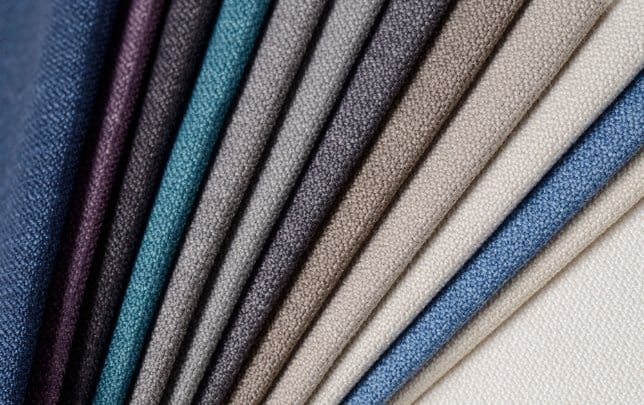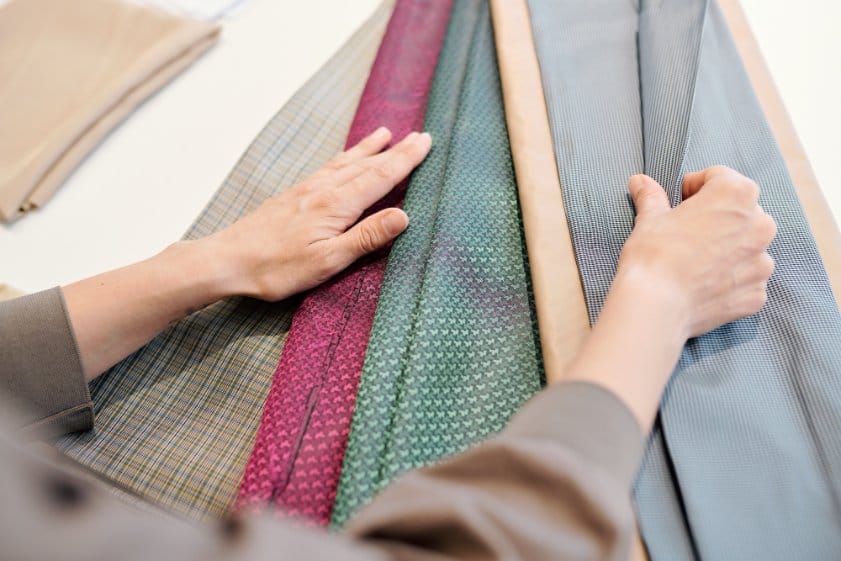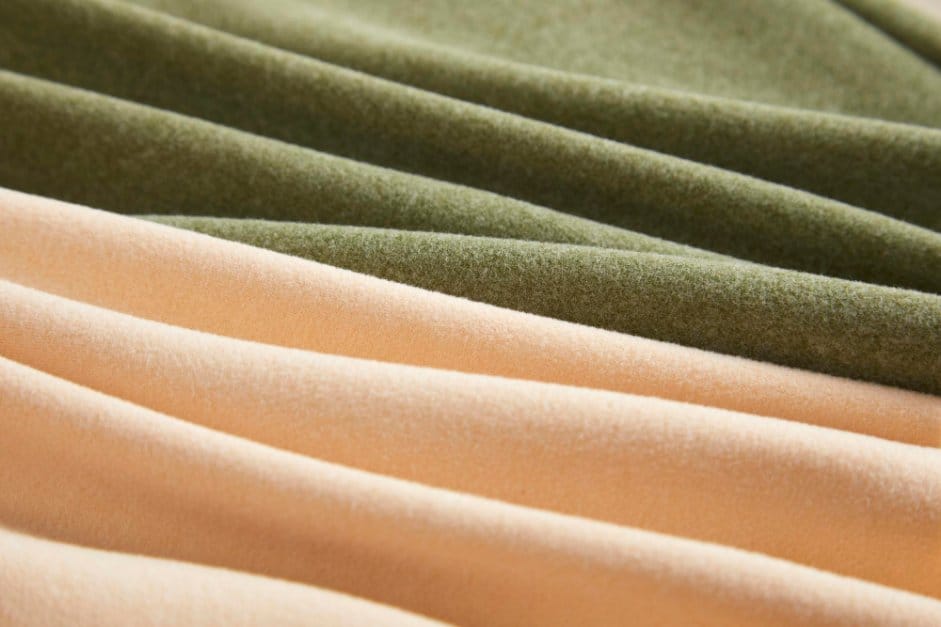From Cotton to High-Tech: Your Complete Guide to Choosing the Perfect Fabric for Every Need
The world of fabrics shapes everything around us, from the clothes we wear to the furniture we use. Different types of fabric serve unique purposes, with natural fibers like cotton offering breathability and comfort, while synthetic materials provide durability and special features.
From cozy velvet upholstery to lightweight summer dresses made of jersey knit, each fabric type brings its own set of qualities to match your needs. Some fabrics work better for specific seasons, while others excel in particular applications like sportswear or formal attire.
You’ll find hundreds of fabric varieties in today’s market, each designed to meet specific requirements. Modern textile technology combines traditional materials with innovative manufacturing processes to create fabrics that are stronger, more comfortable, and easier to care for than ever before.
Table of Contents
Key Takeaways
- Natural and synthetic fabrics each offer distinct benefits for different uses
- Your choice of fabric affects comfort, durability, and maintenance requirements
- Modern textile technology creates fabrics that combine multiple beneficial properties
- Understanding fabric properties helps you make better purchasing decisions
- Proper care extends fabric life and maintains quality
Understanding Natural and Synthetic Fibers
Fabric fibers fall into two main categories based on their origin and manufacturing process. Your choice between natural vs synthetic fabrics can make a big difference in comfort, durability, and care requirements.
The Four Natural Fibers Commonly Used in Clothing
- Cotton remains the most popular natural fiber worldwide. It’s perfect for everyday clothing and bedding because it breathes well and feels soft against your skin. Cotton absorbs up to 27 times its weight in water, making it ideal for towels and summer clothing.
- Wool provides warmth while staying breathable, making it ideal for cold-weather garments. You’ll find it naturally repels water and resists wrinkles. Merino wool is particularly prized for its fineness and softness.
- Silk offers unmatched softness and a natural sheen. Your silk garments will keep you cool in summer and warm in winter thanks to their natural temperature-regulating properties.
- Linen (made from flax) is one of the strongest natural fibers. It gets softer with each wash and works well for summer clothing and home textiles. Linen can last for decades with proper care.
Properties and Uses of Synthetic Fabrics
Synthetic fabrics like polyester offer superior durability and easy care. Your polyester clothes resist wrinkles, dry quickly, and maintain their shape even after many washes.
Nylon provides exceptional strength and flexibility. You’ll find it commonly used in activewear, hosiery, and outdoor gear. It’s actually stronger than steel when compared by weight.
Spandex (also called Lycra or elastane) adds stretch to other fabrics. It can stretch up to 500% of its original length, making it essential for:
- Athletic wear
- Form-fitting garments
- Swimwear
- Compression clothing
Acrylic mimics wool’s warmth while being more affordable and easier to care for. Your acrylic sweaters and blankets resist moths and maintain their shape after washing.
Fabric Cost Comparison Table
| Fabric Type | Price Range (per yard) | Durability Rating | Best Use |
|---|---|---|---|
| Cotton | $3-15 | High | Everyday wear |
| Wool | $8-50 | Very High | Cold weather |
| Silk | $12-100 | Medium | Formal wear |
| Linen | $8-25 | Very High | Summer clothing |
| Polyester | $2-12 | High | Athletic wear |
| Nylon | $3-18 | Very High | Outdoor gear |
How to Identify Different Fabrics
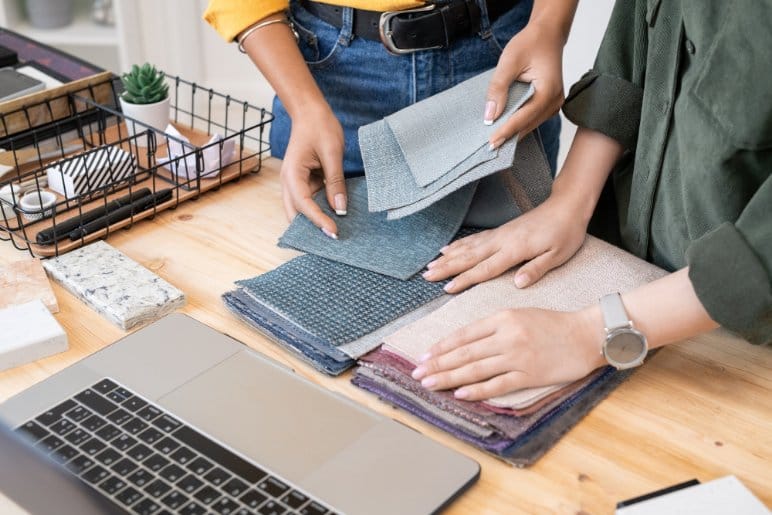
Learning to identify fabrics helps you make better choices and care for your clothes properly. Here are simple ways to tell fabrics apart:
The Touch Test
- Cotton: Soft, smooth, gets softer when wet
- Wool: Slightly scratchy, warm to touch, bounces back when squeezed
- Silk: Cool, smooth, slippery feel
- Linen: Crisp, gets softer with washing, slightly rough texture
- Polyester: Smooth, cool, doesn’t absorb moisture
- Nylon: Slippery, strong, lightweight
The Burn Test (Only for Fabric Scraps)
Warning: Only do this test on small fabric scraps in a safe environment.
- Cotton: Burns quickly, smells like burning paper, leaves soft ash
- Wool: Burns slowly, smells like burning hair, leaves brittle ash
- Silk: Burns slowly, smells like burning hair, leaves small bead
- Polyester: Melts and drips, chemical smell, hard bead residue
Visual Clues
Look at the fabric’s surface and how it moves:
- Satin: Glossy surface, flows smoothly
- Denim: Diagonal weave pattern, stiff structure
- Corduroy: Raised ridges (called wales)
- Velvet: Short, dense pile surface
Interactive Fabric Tools
Take your fabric knowledge to the next level with our smart, interactive tools
🛠️ Interactive Fabric Tools
Take your fabric knowledge to the next level with our smart, interactive tools
Fabric Identification Quiz
Can’t identify your fabric? Our interactive quiz analyzes texture, stretch, and appearance to tell you exactly what you have in just 5 questions.
Take Quiz →Smart Fabric Selector
Tell us your project details and we’ll recommend the perfect fabric with detailed explanations, features, and shopping tips.
Find Perfect Fabric →Care Instructions Generator
Get personalized washing, drying, and storage instructions for any fabric type and garment combination. Save or print for reference.
Get Care Guide →Seasonal Fabric Selector
Discover the perfect fabrics for your climate and lifestyle. Get recommendations based on weather, activity level, and personal preferences.
Find Climate Fabrics →Fabric Selection Flowchart
Follow our interactive decision tree to find the right fabric for clothing, home textiles, or craft projects with step-by-step guidance.
Use Flowchart →💡 All tools are free to use and provide instant, personalized results
Exploring Fabric Weaves and Knits
The way threads interlace creates distinct fabric structures that affect durability, appearance, and comfort. Different weaving and knitting methods give fabrics unique properties for specific uses.
From Plain to Twill and Satin Weaves
Plain weave creates strong, balanced fabric by crossing threads over and under each other. You’ll find this basic pattern in cotton shirts, sheets, and quilting fabric. It’s the most common and durable weave.
Twill weave produces diagonal lines across the fabric. Your jeans use this structure because it makes them tough and hides stains well. The diagonal pattern also makes fabric more flexible.
Satin weave creates smooth, shiny surfaces by floating threads on top. This makes evening gowns and fancy tablecloths look elegant but also more delicate.
Specialty weaves like damask and jacquard create complex patterns woven directly into the fabric. These often appear in upholstery and formal clothing.
Knits vs. Non-wovens: What’s The Difference?
Knit fabrics use interlocking loops instead of crossed threads. Your t-shirts and sweaters are knits because they stretch and move with your body. Jersey knit is the most common type – it’s soft, flexible, and perfect for comfortable clothing.
Non-woven fabrics like felt don’t use threads at all. Instead, fibers bond together through heat, chemicals, or pressure. You’ll find non-wovens in:
- Craft projects
- Insulation materials
- Medical supplies
- Disposable items
Non-wovens cost less to make than woven or knit fabrics. They’re great when you need strength without stretch.
What Type of Fabric is Commonly Used by Beginners?
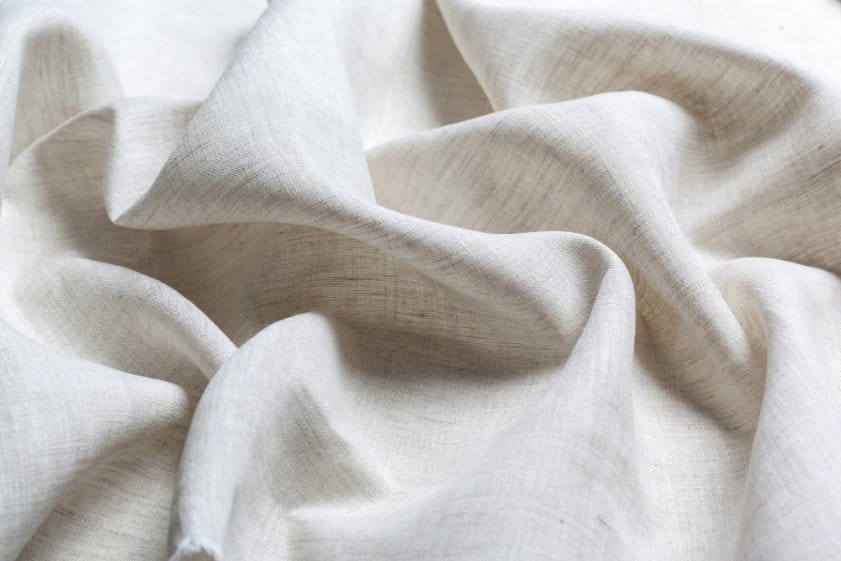
If you’re new to sewing or fashion, cotton is your best starting point. Here’s why cotton works perfectly for beginners:
Easy to Work With: Cotton doesn’t slip or slide while you’re cutting or sewing. It holds its shape and forgives small mistakes.
Affordable: You can practice without spending too much money. Most cotton fabrics cost between $3-8 per yard.
Forgiving: Cotton hides uneven stitches better than synthetic fabrics. If you make a mistake, it’s easier to fix.
Widely Available: Every fabric store carries cotton in dozens of colors and patterns.
Predictable: Cotton behaves consistently. It doesn’t stretch unexpectedly or fray excessively.
Beginner-Friendly Cotton Types:
- Quilting cotton: Stable, easy to cut, perfect for learning
- Cotton canvas: Sturdy for bags and home projects
- Cotton jersey: Great for learning to sew knits
The Role of Fabric in Fashion
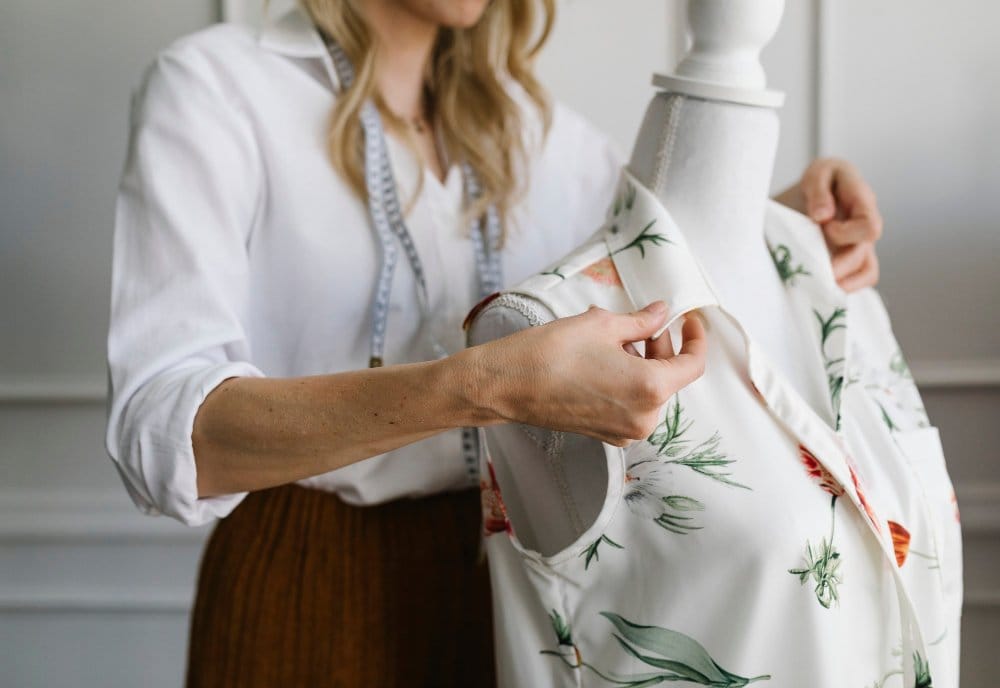
Fabric selection shapes how clothes look, feel, and perform. The right material can make clothing more comfortable, enhance its appearance, and ensure it functions as intended.
Choosing the Right Fabric for Clothing
Your choice of fabric affects how your clothes drape, move, and maintain their shape. Cotton fabric is versatile and works well for everyday clothes like t-shirts and blouses.
Seasonal Fabric Selection:
Summer Fabrics (breathable fabrics for summer):
- Cotton: Absorbs sweat, stays cool
- Linen: Maximum breathability
- Rayon: Flows beautifully, feels cool
- Bamboo: Naturally antimicrobial
Winter Fabrics (warm fabrics for winter clothing):
- Wool: Natural insulation
- Fleece: Lightweight warmth
- Cashmere: Luxury softness
- Thermal knits: Trap body heat
Fabric Weight Guide
Understanding fabric weight helps you choose the right material for your project:
| Weight Category | GSM Range | Best Uses | Examples |
|---|---|---|---|
| Lightweight | 30-150 GSM | Summer clothes, linings | Chiffon, silk, cotton voile |
| Medium weight | 150-350 GSM | Everyday clothing | Cotton poplin, wool crepe |
| Heavy weight | 350+ GSM | Coats, upholstery | Denim, canvas, heavy wool |
Which Fabric Stretches Half a Size?
Ponte knit is famous for stretching exactly half a size, making it perfect for fitted dresses and pants. This double-knit fabric contains about 5-10% spandex, giving it just enough stretch to be comfortable without losing its shape.
Other stretchy fabrics for comfort include:
- Jersey knit: Stretches in all directions
- Scuba knit: Thick, stable stretch
- ITY (Interlock Twist Yarn): Flows well, good recovery
Specialty Fabrics for Bridal and Evening Wear
Luxurious fabrics create stunning formal wear. Silk and satin provide elegant shine and smooth texture for evening dresses.
Delicate lace adds romantic detail to bridal gowns. Pair it with tulle for extra volume and dimension. Organza creates light, airy layers perfect for special occasion dresses.
Velvet adds rich texture and warmth to winter formal wear. Its deep pile catches light beautifully, making it ideal for evening events and holiday parties.
Consider fabric weight and structure. Heavier fabrics like duchess satin hold structured shapes, while lighter materials like chiffon flow gracefully.
What is the Most Commonly Used Fabric?
Cotton wins as the most commonly used fabric worldwide. About 25% of all textiles produced globally are cotton. Here’s why cotton dominates:
Versatility: Works for everything from underwear to jeans to bedsheets Comfort: Soft against skin, breathes well Durability: Gets stronger when wet, lasts for years Affordability: Costs less than most natural fibers Easy Care: Machine washable, relatively low maintenance
Cotton Production by Numbers:
- 25 million tons produced annually worldwide
- Used in 40% of all clothing
- Available in over 200 different fabric types
Industrial and Home Textile Applications

Fabric choices significantly impact the durability and appearance of both residential and commercial spaces. Manufacturing processes must meet strict standards for safety and performance.
Upholstery and Home Décor Fabrics
Chenille and brocade fabrics offer excellent options for your furniture and decorative needs. Chenille provides a soft, plush texture perfect for couches and throw pillows.
Durability Ratings for Upholstery:
- Heavy-duty (50,000+ rubs): Commercial spaces, high-traffic areas
- Medium-duty (15,000-50,000 rubs): Family rooms, dining chairs
- Light-duty (3,000-15,000 rubs): Bedroom furniture, decorative pillows
Brocade adds elegance to formal spaces with its raised patterns and sturdy construction. You’ll find it commonly used in curtains and formal upholstery.
What Fabric is Similar to Corduroy?
Several fabrics share corduroy’s ribbed texture:
- Velveteen: Similar pile but without the ridges
- Needlecord: Fine-wale corduroy, smoother feel
- Wide-wale corduroy: Thicker ridges, more casual look
- Moleskin: Cotton fabric with short, dense nap
Corduroy stands out as a durable choice for heavy-use furniture. Its ribbed texture resists wear while adding visual interest to chairs and ottomans.
Technical Textiles for Durability
Industrial textiles meet specific performance requirements for demanding applications. Canvas excels in outdoor furniture and awnings due to its water-resistant properties.
Performance Fabric Features:
- Fire-resistant fabrics: Self-extinguishing properties
- Water-repellent technology: Beads water on surface
- UV-resistant: Prevents fading and degradation
- Antimicrobial: Resists bacteria and odors
Medical-grade textiles require special antimicrobial treatments. These fabrics must pass strict cleanliness standards for safe use in healthcare settings.
Fabric Care and Maintenance
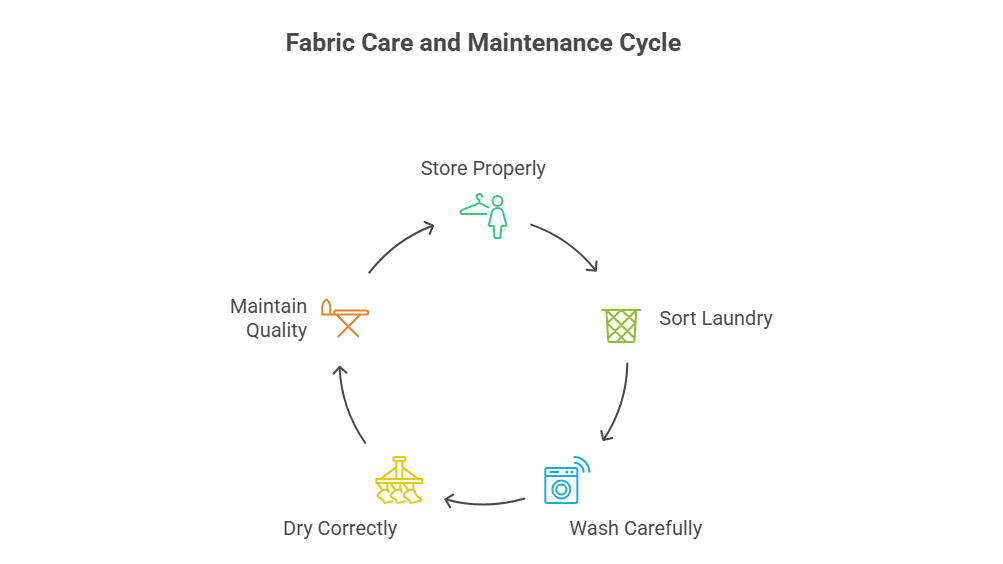
Proper fabric care makes clothes last longer and keeps them looking fresh. Regular maintenance prevents damage and extends the life of your textiles.
Maintaining Textile Quality
Store clothes in a cool, dry place away from direct sunlight to prevent fading and fabric breakdown. Check garment care labels before washing or cleaning any item.
Storage Tips by Fabric Type:
- Wool: Use cedar blocks, avoid plastic bags
- Silk: Wrap in acid-free tissue paper
- Cotton: Clean before storing, use breathable containers
- Synthetic: Less sensitive, standard storage fine
Sort your laundry by color and fabric type. Wash dark colors separately from lights to prevent dye transfer.
Turn delicate items like cotton and silk garments inside out before washing. This protects the outer surface from friction damage.
The Do’s and Don’ts of Fabric Cleaning
Do:
- Use appropriate water temperatures for each fabric type
- Zip zippers and fasten buttons before washing
- Air dry delicate fabrics like wool and silk
- Test cleaning products on a hidden spot first
- Read care labels carefully
Don’t:
- Use bleach on colored fabrics
- Wring or twist wet wool garments
- Over-dry synthetic fabrics like polyester and rayon
- Mix heavy items with delicate ones
- Ignore fabric-specific care instructions
Take special care with acetate and rayon – these fabrics can shrink or lose shape easily. For structured or specialty garments, professional dry cleaning services help maintain their quality.
Stain Removal Guide
| Stain Type | Best Treatment | Fabric Considerations |
|---|---|---|
| Oil/Grease | Dish soap, warm water | Safe for most fabrics |
| Blood | Cold water, hydrogen peroxide | Avoid heat, sets stain |
| Wine | Salt immediately, then cold water | Blot, don’t rub |
| Sweat | White vinegar solution | Good for cotton, test others |
| Ink | Rubbing alcohol | May damage acetate/rayon |
Which Fabric is Best for Regular Use?
For everyday wear, cotton blends often provide the best balance of comfort, durability, and easy care. Here’s why cotton blends win for regular use:
What is the Most Comfortable Fabric Blend?
Cotton-polyester blends (typically 60% cotton, 40% polyester) offer the ideal combination:
- Cotton comfort: Soft, breathable, natural feel
- Polyester durability: Wrinkle resistance, shape retention
- Easy care: Machine washable, quick drying
- Affordable: Less expensive than pure cotton
- Versatile: Works for casual and business clothes
Cotton vs Cotton Blend: Which is Better?
Pure Cotton Advantages:
- More breathable
- Softer feel
- Better for sensitive skin
- Completely natural
Cotton Blend Advantages:
- Less wrinkles
- Dries faster
- Holds color better
- More durable
- Less expensive
The Verdict: Cotton blends win for busy lifestyles, while pure cotton is better for comfort and skin sensitivity.
What are the Oldest Types of Fabric?
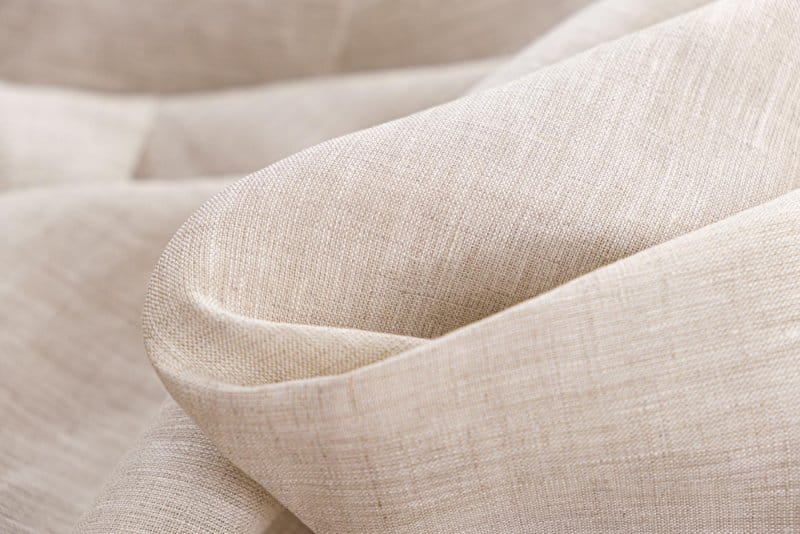
Understanding fabric history helps appreciate modern textiles:
Linen (8000 BCE): The oldest known fabric, made from flax plants. Ancient Egyptians used linen for mummification because of its durability.
Wool (6000 BCE): Among the first animal fibers used. Sheep were domesticated specifically for their wool.
Silk (2700 BCE): Discovered in China, silk remained a closely guarded secret for thousands of years.
Cotton (3000 BCE): First cultivated in the Indus Valley, cotton spread worldwide due to its versatility.
These ancient fabrics still form the foundation of modern textiles, proving their enduring value.
Innovations in Fabric Technology
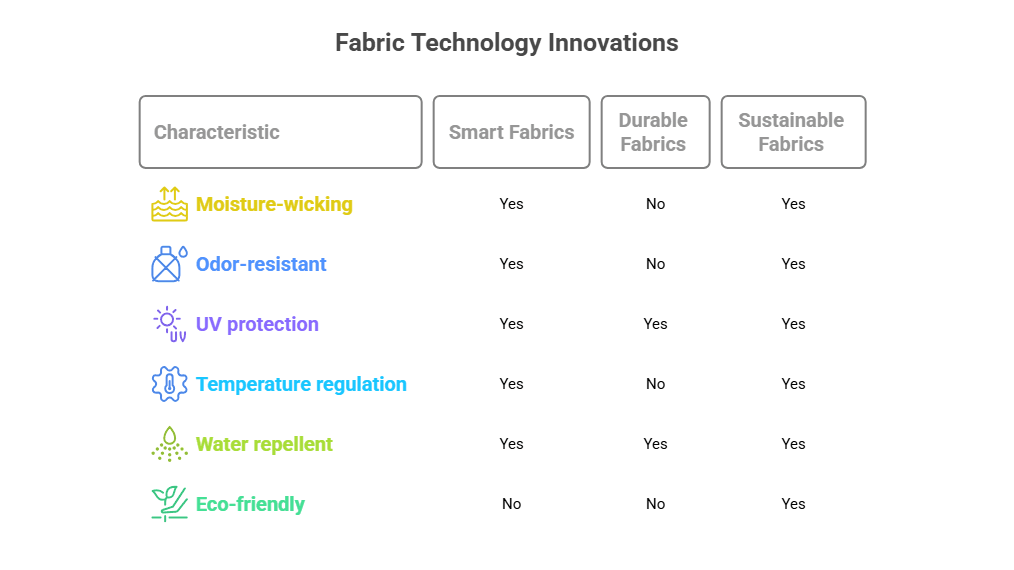
New technologies are making fabrics smarter, stronger, and more Earth-friendly than ever before. Advanced materials and sustainable options give you more choices for both performance and environmental impact.
High-Performance Fabrics and Finishes
Smart fabrics with built-in sensors can track your vital signs and movement during exercise. These innovations are changing how sportswear works for athletes.
Modern Performance Features:
- Moisture-wicking: Pulls sweat away from skin
- Odor-resistant: Antimicrobial treatments
- UV protection: Built-in sun protection (UPF ratings)
- Temperature regulation: Phase-change materials
- DWR coating: Durable water repellent finish
Nano-coating technology adds stain, water, and UV resistance to fabrics without changing their feel. This makes your clothes more durable and easier to maintain.
Most durable fabrics for everyday wear now include:
- Ripstop nylon: Prevents tear spread
- Cordura: Enhanced abrasion resistance
- Kevlar blends: Cut and puncture resistance
- Ceramic-treated cotton: Improved durability
Sustainable and Eco-Friendly Options
Organic materials like bamboo and organic cotton grow without harmful pesticides. These natural options give you soft, breathable fabrics that are better for the planet.
Sustainable Fabric Innovations:
- Recycled polyester: Made from plastic bottles
- Tencel/Lyocell: From sustainably sourced wood pulp
- Hemp: Requires minimal water and pesticides
- Organic cotton: Grown without harmful chemicals
- Piñatex: Leather alternative from pineapple leaves
Environmental Impact Comparison:
| Fabric Type | Water Usage | Chemical Use | Biodegradable |
|---|---|---|---|
| Organic Cotton | High | None | Yes |
| Conventional Cotton | Very High | High | Yes |
| Polyester | Low | High | No |
| Tencel | Medium | Low | Yes |
| Hemp | Low | None | Yes |
Companies create zero-waste patterns to cut fabric more efficiently. This reduces textile waste in landfills and makes fashion more sustainable.
Fabric Selection Flowchart
Start: What do you need fabric for?
│
├─ Clothing
│ ├─ Everyday wear → Cotton or cotton blend
│ ├─ Active wear → Polyester/spandex blend
│ ├─ Formal wear → Silk, wool, or high-quality cotton
│ └─ Seasonal
│ ├─ Summer → Linen, cotton, bamboo
│ └─ Winter → Wool, fleece, thermal knits
│
├─ Home textiles
│ ├─ Bedding → Cotton, linen, bamboo
│ ├─ Upholstery → Canvas, chenille, microfiber
│ └─ Curtains → Cotton, polyester, linen
│
└─ Special needs
├─ Waterproof → Treated nylon, PVC-coated fabrics
├─ Fire-resistant → Treated cotton, aramid fibers
└─ Heavy-duty → Canvas, denim, cordura
Frequently Asked Questions
What are the characteristics of different common clothing fabrics?
Natural fabrics like cotton and wool breathe well and feel soft against your skin. Cotton absorbs moisture and stays cool, making it perfect for summer clothing.
Wool provides warmth and resists water, which makes it great for winter wear. It also naturally repels dirt and odors.
Synthetic fabrics like polyester dry quickly and resist wrinkles. They maintain their shape well after washing.
How can you recognize various fabric types?
You can identify fabrics by touching them and observing their texture. Silk feels smooth and cool, while linen has a crisp, textured feel.
Look at how the fabric moves and drapes. Satin has a glossy surface and flowing movement, while denim is stiff and structured.
Check the care label – it often lists the fiber content, making identification easier.
What are some typical applications for the most popular fabric materials?
Cotton works best for t-shirts, underwear, and bedding due to its softness and breathability.
Damask fabric appears frequently in table linens and upholstery because of its decorative patterns and durability.
Polyester suits athletic wear and outdoor gear since it resists moisture and dries fast.
What items are commonly made from different types of fabrics?
Velvet creates luxurious formal wear, home decor, and furniture coverings. Its plush texture adds elegance to any item.
Linen makes excellent summer clothing, tablecloths, and napkins. It gets softer with each wash while maintaining strength.
Denim is perfect for jeans, jackets, and sturdy bags because of its diagonal weave structure.
How do fabric properties affect their use in everyday items?
Fabric weight determines its best uses. Lightweight vs heavyweight fabrics serve different purposes – light fabrics work for summer clothes and flowing garments, while heavy fabrics suit winter wear and upholstery.
Stretch properties affect comfort and fit. Stretchy fabrics work well for athletic wear and fitted clothing.
Breathability impacts comfort in different climates. Natural fibers typically breathe better than synthetics.
What are the benefits and drawbacks of using certain types of fabrics in garment production?
Natural fibers provide comfort and breathability but may shrink or wrinkle easily. They often need more care when washing and drying.
Synthetic fabrics resist wrinkles and maintain their shape. They cost less to produce but may not breathe as well as natural materials.
Some blended fabrics combine the best qualities of both natural and synthetic materials. This gives you durability with comfort.
How much fabric do I need for different projects?
Basic Clothing Yardage Guide:
• T-shirt: 1.5-2 yards
• Dress: 3-5 yards (depends on style)
• Pants: 2-3 yards
• Skirt: 1.5-2.5 yards
• Jacket: 3-4 yards
Always buy 10-20% extra fabric to account for mistakes and pattern matching.
What’s the difference between waterproof and water-resistant fabrics?
Water-resistant vs waterproof fabrics have different levels of protection:
• Water-resistant: Repels light rain, eventually soaks through
• Waterproof: Completely blocks water, often with sealed seams
• Water-repellent: Surface treatment that beads water
Choose based on your needs – water-resistant works for light rain, waterproof for heavy downpours.
Conclusion
Choosing the right fabric transforms your projects from good to exceptional. Throughout this comprehensive guide, we’ve explored how natural fibers like cotton, wool, silk, and linen each bring unique strengths to different applications. Cotton’s versatility and comfort make it the world’s most popular fabric, while wool’s natural warmth and water resistance excel in cold weather. Silk provides luxury and temperature regulation, and linen offers unmatched durability and breathability.
Synthetic fabrics have revolutionized textiles by providing solutions that natural fibers couldn’t achieve alone. Polyester’s wrinkle resistance and quick-drying properties make it perfect for busy lifestyles and athletic wear. Nylon’s incredible strength serves outdoor enthusiasts and industrial applications. Spandex adds the stretch that makes modern activewear possible.
The key insight is that there’s no single “best” fabric. Instead, the optimal choice depends on your specific needs, budget, and preferences. Cotton blends often provide the best balance for everyday wear, combining natural comfort with synthetic durability. For beginners, cotton remains the safest choice due to its forgiving nature and wide availability.
Modern fabric technology continues to expand your options with smart textiles, sustainable materials, and performance enhancements. Eco-friendly innovations like recycled polyester and organic cotton let you make environmentally conscious choices without sacrificing quality. Advanced treatments add water resistance, UV protection, and antimicrobial properties to traditional fabrics.
Key Recommendations:
- Start with basics: Master cotton, polyester, and wool before exploring specialty fabrics
- Consider your lifestyle: Choose easy-care blends if you have a busy schedule
- Match fabric to function: Athletic wear needs different properties than formal wear
- Invest in quality: Higher-grade fabrics last longer and perform better
- Read care labels: Proper maintenance dramatically extends fabric life
- Test before committing: Buy small amounts first for expensive or unfamiliar fabrics
- Think sustainably: Consider environmental impact in your fabric choices
Understanding fabric properties empowers you to make informed decisions whether you’re shopping for clothes, decorating your home, or starting a sewing project. The right fabric choice enhances comfort, improves durability, and ensures your investment pays off over time.
Remember that fabric technology keeps evolving. Stay curious about new developments in sustainable materials, performance features, and innovative blends. The perfect fabric for your next project might be a cutting-edge innovation that didn’t exist just a few years ago.
By applying the knowledge from this guide, you’ll confidently navigate fabric stores, make better purchasing decisions, and create projects that look professional and last for years. The world of textiles offers endless possibilities – now you have the foundation to explore them all.

